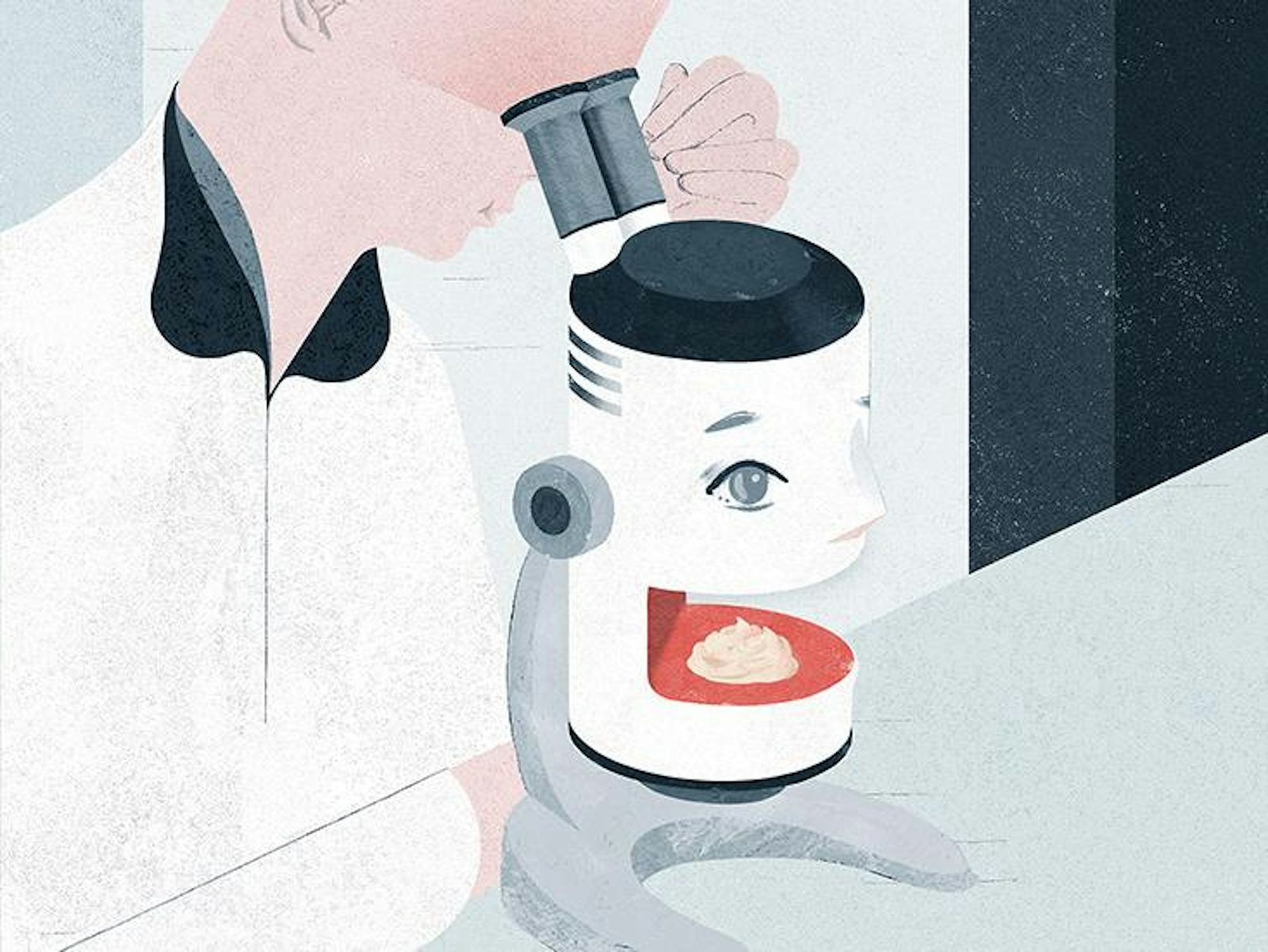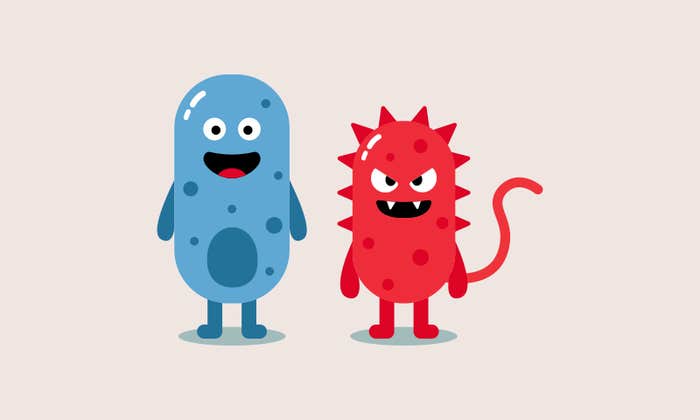While a strong trend in the culinary arts has been to let individual, natural ingredients shine through, one food has quietly come to dominate the retail market by merging a group of incongruous ingredients together. Mayonnaise, that familiar white goop hiding in your sandwich and coleslaw, is officially the most valuable condiment in the nation. It grossed more than $2 billion in 2013, way ahead of the number-two condiment, that old standby ketchup, which came in at a paltry $800 million. It’s an impressive showing for a substance whose very essence collides with the notion that oil and water don’t mix.
As mayonnaise has conquered the world, it has also divided its eaters. Paul Rozin, professor of food psychology at the University of Pennsylvania, says mayonnaise “splits people into likers and dislikers, with few in the middle.” Fans include author Tom Robbins, who quipped, “I eat so much mayonnaise they were going to send me to the Mayo Clinic” and wrote at length about its virtues; Jazz legend Wynton Marsalis has trumpeted its praises. Then there are avowed haters such as President Obama, TV chef Rachael Ray, and new Tonight Show host Jimmy Fallon.
These reactions may seem outsized for white stuff that comes in plastic packets, yet research on why we love and hate food suggests there are deep roots to our complicated feelings about mayonnaise. They have to do with its complex combination of flavors as well as its distinctive texture, both of which reveal something about how evolution shaped our preferences for food. Not bad for a substance whose existence is so unlikely and precarious as mayo’s.
People, particularly the French, are prone to quarrel about the origins of mayonnaise, but most trace its discovery to the Mediterranean in the 18th century. In the most common legend, the French Duke of Richelieu, after capturing Mahon (the capital of the Spanish island Minorca) in 1756, called for a feast. The cook had been planning an egg- and cream-based sauce, but discovered he had no cream and had to improvise with oil. And voilà! The Duke’s victory party was saved, and the city of Mahon was immortalized in sauce mahonnaise, later corrupted to mayonnaise. In another story, King Carlos III of Spain stopped in Minorca in 1760 and was treated to a big, spiny lobster, which was not pleasing to his majesty. The hosting governor instructed his chef to make a sauce that would make the crustacean more appetizing.1 You can guess what happens next.
The stories share many elements. Above all, they portray mayonnaise as an ingenious way to combine oil and vinegar (or lemon juice, another acidic, water-based mixture). Due to their incompatible molecular structures, oil and vinegar will quickly separate, even when shaken together, as in a salad-dressing bottle. Vinegar, being mostly water, has a similarly polar structure, with its electrons congregating at the O part of the H2O; oil is not polar, so the respective molecules have no way of connecting.
The magic of mayonnaise is in the egg yolk, which contains substances that stabilize the oil and water in a mixture called an emulsion. One key component is the fatty molecule lecithin, which has a polar end that binds with water and a non-polar end that latches onto oil. The lecithin forms a layer around the oil droplets that prevents them from coalescing with one another and keeps the mixture from separating. The yolk also contains high- and low-density lipoproteins, known popularly as the “bad” and “good” cholesterols, which also act as emulsifiers.
To get mayonnaise to hold the emulsion, there is one important trick: The oil must be added slowly to the yolk, while the mixture is constantly stirred. The stirring breaks the oil into small droplets, which the lemon juice or vinegar can more easily absorb. If rushed, the sauce separates, “heartbreakingly deflating from a thick and attractive froth into a thin and oily puddle,” as Melissa Clark wrote in a New York Times column. If prepared correctly, the emulsion transforms the two liquids into a thick and stable foam.
While foodies think about how to make the freshest homemade mayo, scientists are exploring parallels between its molecular structure and the behavior of viscous liquids, with potential applications ranging from industrial food production to ocean clean-up. Chemistry professor P. Somasundaran of Columbia University says protein plays an important role in mayonnaise’s stability. His lab is currently working on developing a bacterial protein for cleaning up oil spills, and it works in much the same way that lecithin and other emulsifiers in mayo do: by surrounding fat droplets in a hard shell and allowing the solid-like blob to be moved.

While chemists sort out the sauce’s physical properties, food psychologists have pinned some of the reasons why it’s so popular. For one thing, mayonnaise is a calorie jackpot. It’s about 85 percent fat, which provides more energy than any other type of nutrient. Back when calories were scarce, our ancestors’ nutritional imperative was to seek out energy-dense foods like fat, explains John Prescott in his book Taste Matters: Why We Like the Foods We Do. When fat is ingested, the brain releases the neurotransmitter dopamine, providing a buzz of pleasure, he explained via email.
Fat does not officially have its own taste, although recent research suggests we can smell it. And, crucially, fat enhances flavor by various means. When paired with acid, as with wine and cheese, the fat coats the tongue creating a flavor contrast that is a known crowd-pleaser. While there is little protein in mayonnaise, a hint of it is transmitted through glutamate, an amino acid present in high concentrations in egg yolk. Glutamate acts as an indicator to our gustatory system of the presence of protein in food, and is thought to have been useful in our evolutionary past when the body needed encouragement to load up on protein when it was available.2 This subtle taste is identified as umami, one of the five basic taste sensations. Combine that with saltiness (from a bit of salt), sourness (from the vinegar or lemon), and sugar (in the case of processed mayo), and mayo contains four of the five recognized tastes. Only bitter is missing, and no one seems to mind that.
Its many flavors make mayonnaise amenable to pairing with many different foods. In Mexico it lathers corn on the cob. In Japan, it lubes sushi and decorates pizza. In Brazil mayonnaise burgers can be ordered in street-side kiosks. In Brussels you can purchase mayonnaise-slathered French fries from a vending machine. I’ve personally scooped mayo into soup in Siberia, following the lead of my local dining companions.
But if you ask people what mayonnaise tastes like, chances are they’ll be hard-pressed to pull apart the different flavors. It can be a tough assignment even for even professional tasters, says Gail Vance Civille, president of Sensory Spectrum, Inc., a consulting firm that focuses on how the senses relate to consumer purchasing decisions. She says that part of what makes good mayo hard to break down is a seamless overlap of flavors.
And while she describes mayonnaise’s flavor merger as “beautiful,” Vance Civille believes that mayonnaise’s most important contribution to eating derives from a quality called lubricity, which makes food “easier to chew and swallow.” Think tuna fish, or a dry sandwich. This lubricity, while important to the success of mayo, could also be at the core of why many people hate it.
Despite its many positive attributes, there is a very vocal faction of the population that agrees with Obama’s view and has an immediate visceral revulsion to mayonnaise. This may be due to the fact that evolution not only hardwired our preferences for nutrients but also programmed us to avoid foods that might cause harm.
University of Pennsylvania food professor Paul Rozin has written that disgust is “at its core, a food-rejection emotion,” that was built in to protect us from foods that might carry disease. To the extent that the disease-avoidance theory of disgust is correct, it seems that mayo’s very lubricity, that slippery, slimy texture that is perhaps its most important culinary attribute, is also part of what turns people off.
Marcia Pelchat, a researcher at the Monell Chemical Senses Center, told me that fear of foods with a slimy texture “would have protected people against eating poisonous or spoiled foods, which can become slimy when they’re rotting.” This belly-level taboo also applies to most body fluids, like snot, spit, and others, all of which can carry disease.
“If you were making fake pus,” Pelchat asked, ”what would you make it out of?”
The case for widespread disgust for mayo has recently been supported by the work of American University graduate student Laura Kushner. Her dissertation, Food for Thought: The Role of Texture in the Disgust Response, looked at the reactions of 98 subjects to foods such as raw tomatoes, peanut butter, boiled okra, large-curd cottage cheese, and of course mayonnaise. Mayonnaise came out tied for first (with over-ripe bananas) as the food people simply refused to eat.
This is consistent with my anecdotal experience, as a mayo lover, having watched countless faces across the table react to the sight of me applying it to whatever substrate was at hand.
The experts on food aversion I spoke with generally agreed that the slimy texture of mayo is responsible for much, if not most, of the disgust people feel towards it. In some people, this repulsion can take an extreme form. Young children are often naturally picky about their food, which is an important adaptation when they learn to walk and need self-restraint to prevent them from ingesting poisonous things, say psychologists. But there are individuals who retain this pickiness into adulthood, when it is labeled avoidant/restrictive food intake disorder. “People with this disorder don’t like mayo, cartilage, and gelatinous foods, like jello. They may also be afraid of puddings and custards. Flan might be disgusting also, as well as undercooked or soft-boiled eggs,” said Pelchat. “As you can imagine, it can be boring to eat with these people.”
Ari LeVaux writes Flash in the Pan, a syndicated weekly food column that regularly appears in TheAtlantic.com, Alternet, Slate, Civil Eats, and other online publications.
References
1. Andrews, Colman. Catalan Cuisine. (Boston, 2005).
2. Prescott, John. Taste Matters: Why we like the food we do. (London, 2012)


























